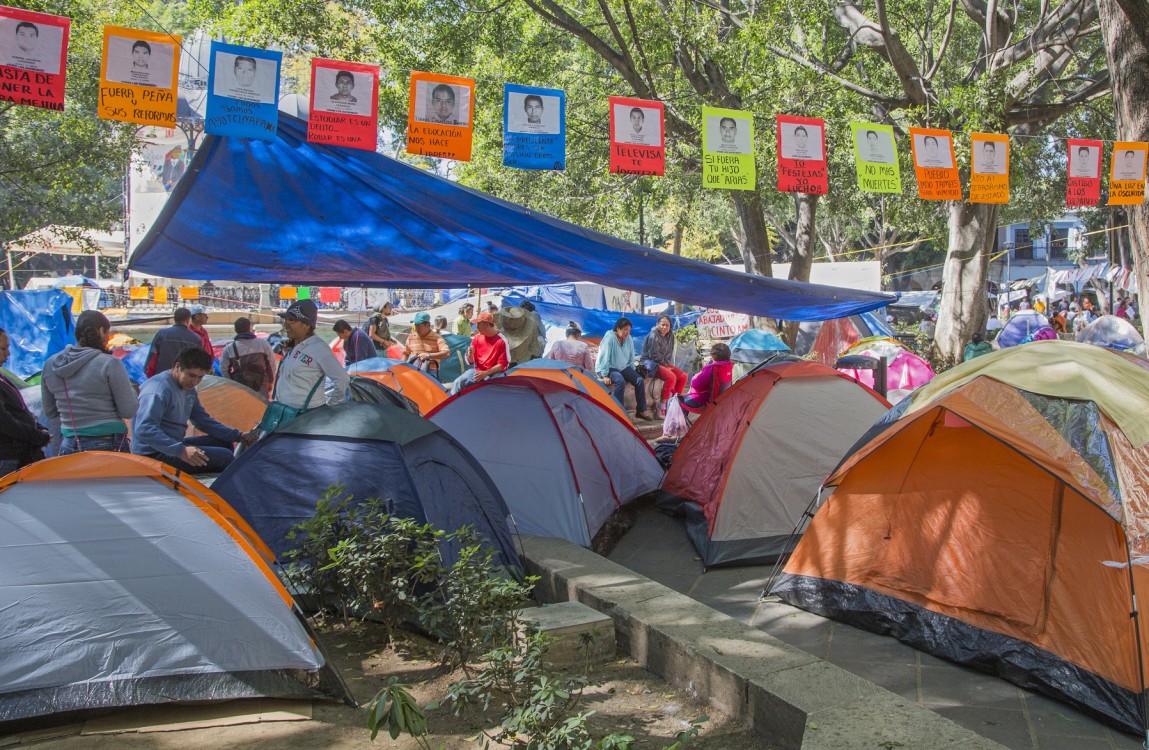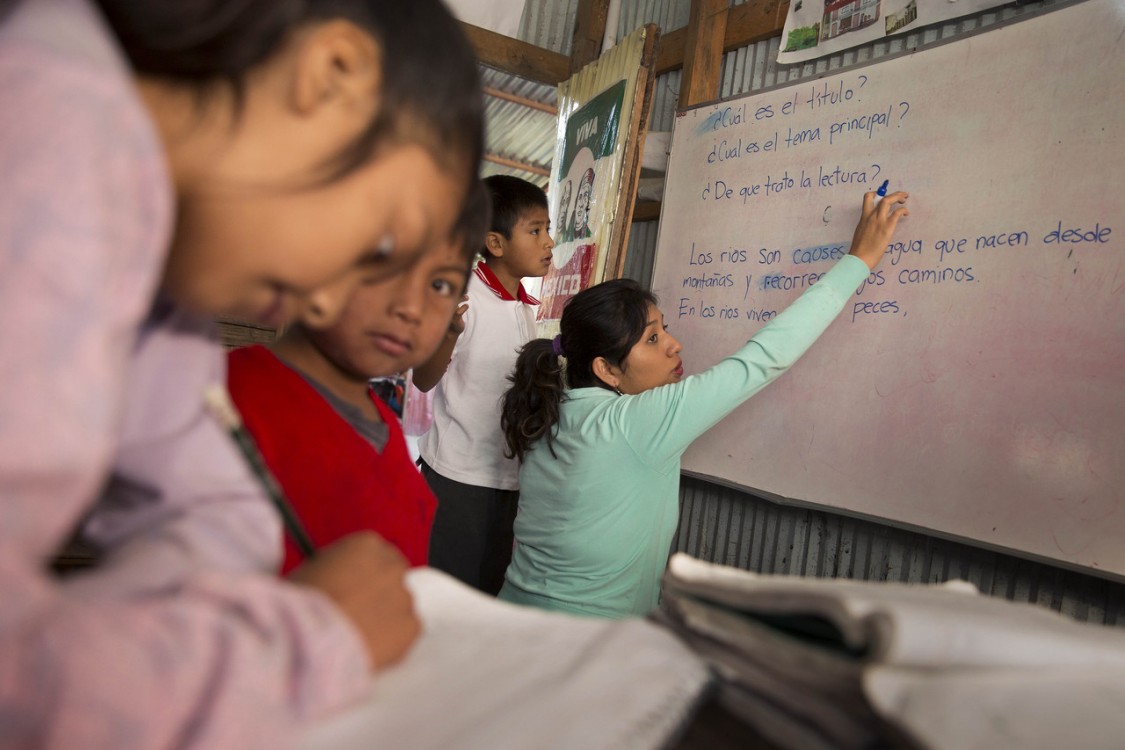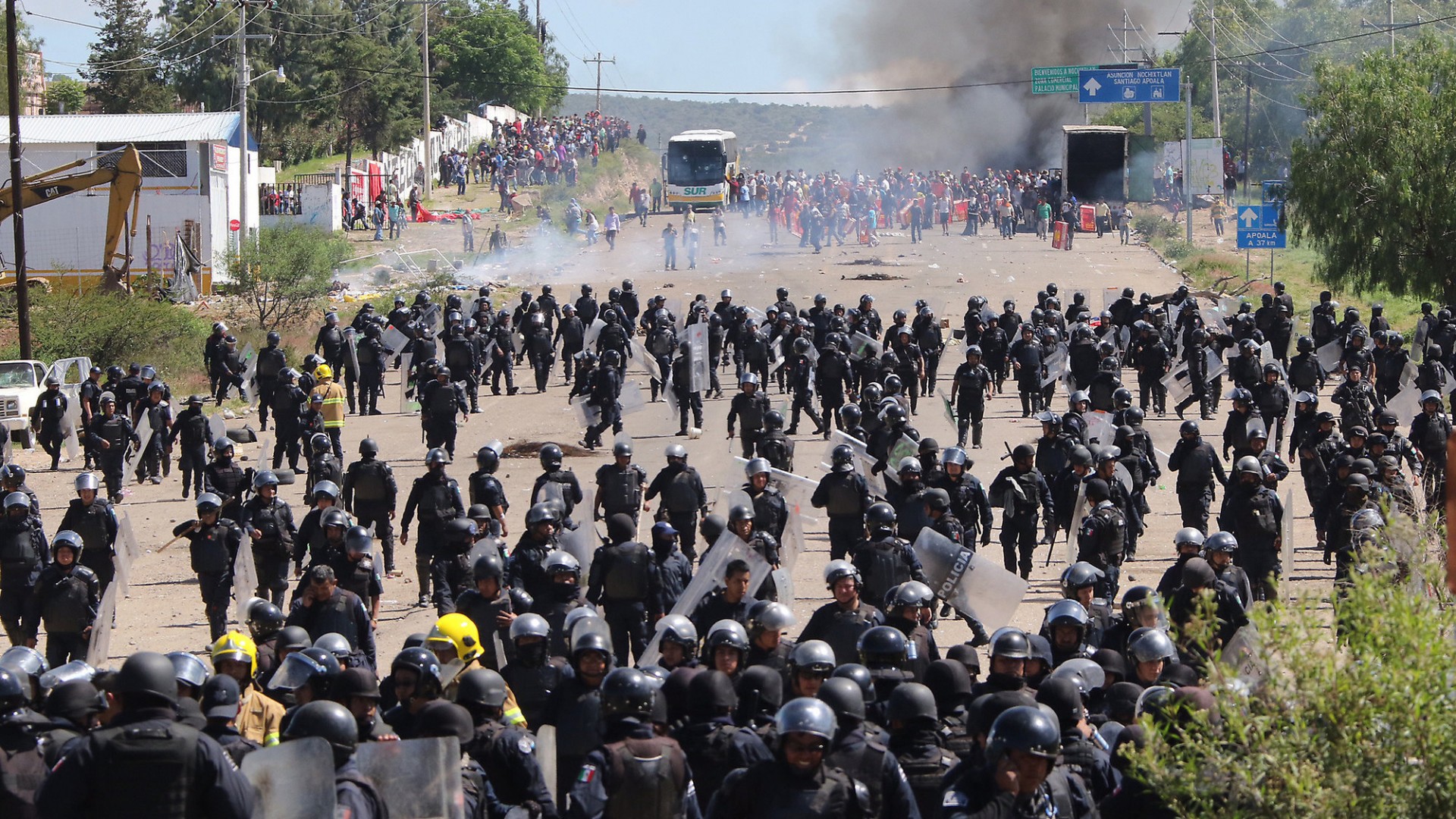In a statement released on June 17, the Zapatistas posed the following questions regarding the ongoing national teachers’ strike in Mexico:
"They have beaten them, gassed them, imprisoned them, threatened them, fired them unjustly, slandered them, and declared a de facto state-of-siege in Mexico City. What’s next? Will they disappear them? Will they murder them? Seriously? The ‘education’ reform will be born upon the blood and cadavers of the teachers?"
Two days later, the state answered these questions with an emphatic “Yes.” The response came in the form of machine-gun fire from Federal Police directed at teachers and residents defending a highway blockade in Nochixtlán, a town in the southern state of Oaxaca and roughly 80 kilometers northwest of the capital city of that state, also called Oaxaca.
Initially, the Oaxaca Ministry of Public Security claimed that the Federal Police were unarmed and “not even carrying batons.” After ample visual evidence and a mounting body count to the contrary, the state admitted federal police opened fire on the blockade, killing six.
Meanwhile, medics in Nochixtlán released a list of eight killed, 45 wounded and 22 disappeared. On Monday, the National Coordinator of Education Workers (CNTE), the teachers union leading the strike, said ten were killed on Sunday, including nine at Nochixtlán.
Teachers belonging to the CNTE, a more radical faction of about 200,000 inside of the 1.3 million-strong National Union of Education Workers (SNTE), the largest union in Latin America, have been on indefinite strike since May 15. Their primary demand is the repeal of the “Educational Reform” initiated by Mexican President Enrique Peña Nieto in 2013.
A neoliberal plan based on a 2008 agreement between Mexico and the Organization for Economic Cooperation and Development, the reform seeks to standardize and privatize Mexico’s public education system, as well as weaken the power of the teachers’ union. The teachers are also demanding more investment in education, freedom for all political prisoners and prisoners of conscience, truth and justice for the 43 disappeared students from Ayotzinapa, and an end to neoliberal structural reforms in general.
The state has refused to even talk to the union, instead deploying thousands of federal police and gendarmerie to areas where the strike is strongest — primarily Oaxaca, Chiapas, Michoacán and Mexico City, though also in states such as Guerrero, Tabasco and Veracruz.
A late-night attack on June 11 against a teachers’ encampment blockading the Oaxaca State Institute of Public Education (IEEPO) by more than 1,000 police led to teachers and residents quickly mobilizing and establishing barricades and highway blockades in the early morning hours of June 12. Also on Saturday, the top two leaders of the CNTE’s Oaxacan branch, Section 22, were arrested in Oaxaca and Mexico City, and 24 arrest warrants issued for others in leadership positions.
The Nochixtlán blockade was one of those erected on June 12 and for a week had been successful in preventing hundreds of federal forces from reaching the city of Oaxaca. Dozens of highway blockades were in place by June 14, the day that tens of thousands came out to the streets to commemorate the ten-year anniversary of the beginning of the five-month-long 2006 rebellion.
The CNTE controlled 37 critical spots on highways throughout the state, blockaded in part with 50 expropriated tanker trucks. The blockades were so effective that ADO, a major first-class bus line, indefinitely cancelled all trips from Mexico City to Oaxaca and federal police began flying reinforcements into airports in the city of Oaxaca, Huatulco (on the coast), and Ciudad Ixtepec (on the Isthmus).
On Sunday morning, the federal and state police attack on the people and teachers of Oaxaca began in earnest. Nochixtlán defended its blockade against a four-hour police assault, resulting in the previously mentioned nine deaths. Police took over the local hospital and forbid entry to anyone not wearing a uniform. The wounded demonstrators were treated in churches and schools, likely resulting in more deaths due to lack of necessary treatment.
The next police attack on Sunday occurred at the blockade in Hacienda Blanca, 11 kilometers north of the city of Oaxaca. There police fired tear gas from helicopters, including into the school being used as a makeshift medical center, and there were reports of live ammunition being fired.
After breaking the blockade, they began going door-to-door looking for people in hiding. The police advanced into the municipal boundaries of Oaxaca and heavy clashes occurred in the Viguera neighborhood at the Juárez Monument. Police again used live ammunition, wounding a young man who later died of his wounds, making him the tenth fatality of the day. Another death occurred near the blockade in Juchitán, in the Isthmus of Tehuantepec, when a reporter covering the protests was shot by “unknown subjects” in circumstances that remain unclear.
Sunday night, police began cutting power to various sections of the city and public transit was suspended, raising fears that federal and state forces would attempt to take the city and the teachers’ encampment in the main square (the Zócalo). As of this writing, such an attack has not occurred and around 30 highway blockades remain in place in Oaxaca, along with barricades in the historic city center. Police and gendarmerie did attack a blockade in Salina Cruz, a major port city, but it was successfully defended by teachers and residents.
Monday saw at least 40,000 people march in Oaxaca to protest Sunday’s state violence. Eighty-one civil society groups issued a“humanitarian alert due to the armed State attack on a civilian population.” Of note is that none of those killed on Sunday were teachers. Oaxaca Governor Gabino Cué claimed that teachers are in the minority on the blockades. This was an attempt on his part to delegitimize the struggle, but it instead speaks to the growing solidarity sparked by the teachers’ strike.
Also on Monday, prominent Oaxacan artists released a call for an end to state repression and a “cultural barricade against repression” was held that afternoon. The Oaxaca Minister of Indigenous Affairs resigned in protest and students took over the Benito Juárez Autonomous University of Oaxaca (UABJO), including its radio station, Radio Universidad.
Teachers in neighboring Chiapas organized blockades at major points in the capital city of Tuxtla Gutiérrez. Nine people, including journalists, were detained at a solidarity demonstration in Mexico City. The arrested women were threatened with rape by the police and were sexually assaulted. All were later released.
The situation continues to develop and change rapidly. One thing is certain: ten years after the birth of the Popular Assembly of the Peoples of Oaxaca (APPO), the ember of resistance has ignited again, as has the desire and brutality of the state to stomp it out once and for all.
3 WAYS TO SHOW YOUR SUPPORT
- Log in to post comments

















Comments
Howell Hurst replied on
Mexican Police
Low paid Mexican police commonly align themselves with drug lords for pay. Fear rules in Mexico. Knowledge is not highly prized by the drug lords. Police did not jail a meth user who attacked me in Baja. They are afraid to anger their side source of income. A corrupt police and drug merchants rule the situation.